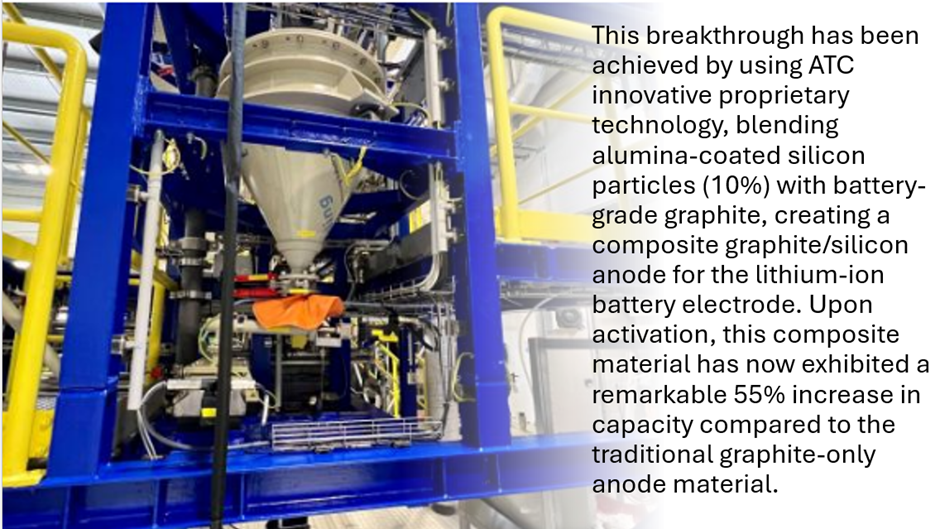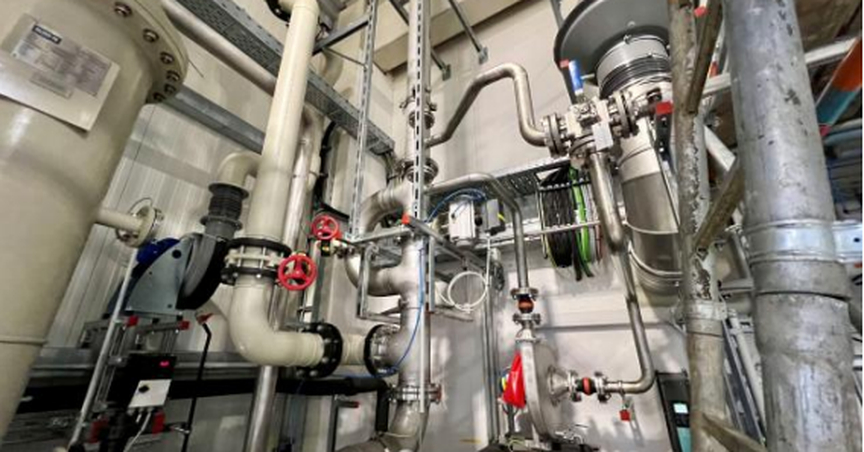Highlights
- ATC achieved a 55% increase in lithium-ion battery anode energy capacity.
- The new anode material has an average energy retention capacity of 500 mAh/g, compared to 320 mAh/g in standard anodes.
- ATC aims to bring its patented technology to market and is commissioning a pilot plant to scale up production.
Altech Batteries Limited (ASX:ATC, FRA:A3Y) has reached an extraordinary milestone in the development of its Silumina AnodesTM lithium-ion battery material technology, achieving an average 55% increase in battery anode energy capacity. This represented a significant improvement from the previous 30% rise. This milestone was accomplished by ATC’s R&D team under the leadership of Dr. Jingyuan Liu.

Image and Data source: Company update
During testing, the battery anode material demonstrated an average energy retention capacity of around 500 mAh/g, surpassing the average 320 mAh/g found in standard battery anodes, which reflects the remarkable 55% surge in energy retention capacity.
This enhanced performance along with good stability and cycling durability highlights the technology’s significant potential to revolutionise the industry. The advancements show that silicon particles can be adjusted to address capacity fading issues, occurring due to first-cycle-capacity-loss and swelling.
On this significant development, Iggy Tan, CEO and MD of ATC, stated, “We are thrilled with the significant progress we have made in overcoming the critical challenges associated with using silicon in lithium-ion battery anodes. Our breakthrough technology represents a major step forward in unlocking the full potential of silicon in lithium-ion batteries, and we believe it has the potential to revolutionise the battery industry. We are currently commissioning a pilot plant to further scale up our technology and bring it to market".
ATC’s achievements in battery technology field
Previously, Altech had announced a major breakthrough in battery technology, revealing that it had surpassed the "silicon barrier" and successfully developed a range of lithium-ion battery anode materials with nearly 30% higher retention capacity compared to standard materials. Building on this progress, ATC’ research and development lab in Perth, Western Australia, has been focused on further improving the technology.
The company aims to exceed the previous 30% retention capacity by increasing silicon content. Although it faced challenges in dispersing alumina-coated silicon particles, ATC overcame these obstacles through advancements in organic binders, coating techniques, and other innovative approaches. Following persistent efforts, the challenges were resolved.
The laboratory testing of composite graphite/silicon batteries effectively addressed key issues associated withsilicon in lithium-ion battery anodes, such as silicon particle swelling, first-cycle capacity loss of up to 50%, and rapid degradation. By spherifying the silicon particles, ATC managed the negative effects of silicon expansion in lithium-ion batteries.
The company intends to bring its patented Silumina AnodesTM technology to market and is constructing a pilot plant near the proposed project site to facilitate the qualification process for its product. ATC has announced that construction of the plant is complete, and it is currently in the hot commissioning phase.
ATC shares jumped 4.76% to trade at AU$0.044 apiece at the time of writing on 17 October 2024.



